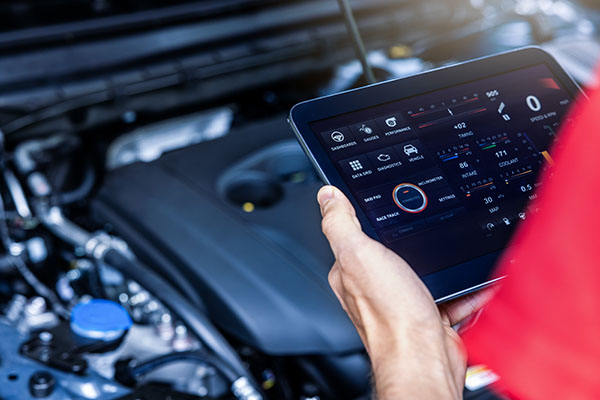In the fast-paced world of commercial transportation, efficiency and reliability are paramount. Whether it’s heavy goods vehicles (HGVs), trucks, or other commercial vehicles, downtime can lead to significant financial losses and operational disruptions. This is where advanced HGV and truck diagnostics tools like Jaltest come into play, transforming how technicians and mechanics approach vehicle maintenance and repairs.
The Scope of Diagnostic Tools in Commercial Vehicles
Automotive diagnostic tools such as Jaltest are designed to interface with a wide range of vehicle systems and components, offering comprehensive diagnostics that cover almost every aspect of a commercial vehicle. Here are some key areas where these tools excel:
1. Engine Management Systems
Modern engines are complex, integrating numerous sensors and control units to optimise performance and efficiency. Diagnostic tools can read fault codes, monitor real-time data, and perform component tests, making it easier to identify issues related to fuel injection, turbochargers, exhaust systems, and more.
2. Transmission Systems
For HGVs and trucks, transmission health is crucial. Diagnostic tools can access transmission control modules to diagnose issues like gear shifting problems, torque converter issues, and other transmission-related faults, ensuring smooth and reliable operation.
3. Brake Systems
Safety is non-negotiable in commercial vehicles, and brakes are a critical component. Diagnostic tools can interface with ABS and electronic brake control systems to diagnose faults, perform sensor calibrations, and ensure the braking system is functioning correctly.
4. Suspension and Steering Systems
Advanced diagnostics can help maintain optimal suspension and steering performance. Tools like Jaltest can diagnose issues in electronic steering systems, air suspension, and other related components, enhancing vehicle stability and safety.
5. Electrical and Electronic Systems
Commercial vehicles rely heavily on electronic systems for various functions. Diagnostic tools can troubleshoot issues in lighting systems, battery management, central locking, and other electrical components, ensuring all systems are operational.
6. Emission Control Systems
With stringent emission regulations, maintaining the health of emission control systems is vital. Diagnostic tools help monitor and diagnose issues in exhaust after-treatment systems, diesel particulate filters (DPFs), and selective catalytic reduction (SCR) systems.
7. Climate Control Systems
Comfort is key for long-haul drivers. Diagnostic tools can diagnose and repair faults in air conditioning and climate control systems, ensuring a comfortable driving environment.
The Efficiency Advantage
One of the primary benefits of using advanced diagnostic tools like Jaltest is the significant time savings they offer. Here’s how they contribute to faster and more efficient vehicle maintenance:
Rapid Fault Identification
Traditional diagnostic methods can be time-consuming, often requiring manual inspection and trial-and-error approaches. Diagnostic tools can quickly read fault codes and provide detailed information about the nature and location of the problem, allowing technicians to identify issues in a fraction of the time.
Comprehensive Diagnostics
These tools provide a holistic view of the vehicle’s health, enabling technicians to diagnose multiple systems simultaneously. This comprehensive approach reduces the need for repeated diagnostic sessions and ensures all potential issues are addressed in one go.
Accurate Data and Reporting
Diagnostic tools offer precise data and comprehensive reports, which aid in accurate troubleshooting and repair. This reduces the likelihood of misdiagnosis and ensures that repairs are targeted and effective, minimising the chance of recurring issues.
Real-Time Monitoring
The ability to monitor real-time data allows technicians to observe vehicle performance under various conditions. This can be particularly useful for diagnosing intermittent issues that may not be apparent during a static inspection.
Enhanced Communication
Advanced diagnostic tools often come with features that facilitate better communication between the technician and the vehicle’s onboard systems. This can include bi-directional controls, which allow technicians to activate components, perform calibrations, and reset systems directly from the diagnostic tool.
Getting Commercial Vehicles Back on the Road
The ultimate goal of using diagnostic tools like Jaltest is to minimise vehicle downtime and get commercial vehicles back on the road as soon as possible. By streamlining the diagnostic process, these tools enable quicker repairs and more efficient maintenance schedules. This leads to:
Reduced Downtime: Faster diagnostics mean that vehicles spend less time in the workshop and more time on the road, maintaining operational efficiency.
Cost Savings: Efficient diagnostics and repairs reduce labor costs and the likelihood of costly breakdowns, leading to significant financial savings.
Improved Reliability: Regular and accurate diagnostics help maintain vehicle reliability, preventing unexpected failures and ensuring that commercial vehicles remain dependable.
Conclusion
Automotive diagnostic tools like Jaltest are revolutionising the maintenance and repair of commercial vehicles. By offering comprehensive, accurate, and efficient diagnostics, they empower technicians and mechanics to keep HGVs, trucks, and other commercial vehicles running smoothly. The result is reduced downtime, lower operational costs, and enhanced reliability, making these tools an invaluable asset in the commercial transportation industry. Embracing advanced diagnostics is not just a technological upgrade; it’s a strategic move towards a more efficient and reliable future for commercial vehicle maintenance.







